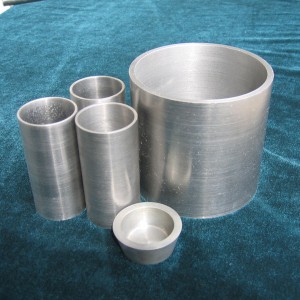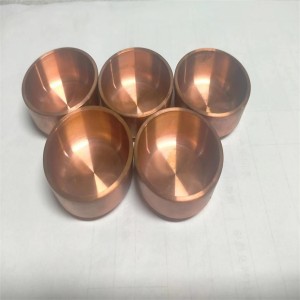filament tungsten twisted wire heater elements
Tungsten wire and nichrome wire are both used as heating elements, but they have different properties and are used in different applications. Here are some key differences between the two:
1. Material composition:
- Tungsten wire: Tungsten wire is made from tungsten, a metal known for its high melting point and heat resistance. Tungsten filament is commonly used in incandescent light bulbs and other high-temperature applications.
- Nichrome wire: Nichrome wire is an alloy composed of nickel and chromium with small amounts of other metals such as iron. The exact composition of nichrome may vary, but it is known for its high resistance and ability to generate heat when electric current passes through it.
2. Melting point and temperature resistance:
- Tungsten wire: Tungsten has an extremely high melting point, making it suitable for use in applications requiring very high temperatures, such as incandescent lamps and high-temperature furnaces.
- Nichrome wire: Nichrome has a lower melting point compared to tungsten, but it still has a higher melting temperature and is able to withstand high temperatures. Nichrome wire is commonly used in heating elements in applications such as toasters, hair dryers and industrial furnaces.
3. Resistor:
- Tungsten wire: Tungsten has a relatively high resistance, which makes it efficient at generating heat when electric current passes through it. This property makes it suitable for use with incandescent light bulbs and other high-temperature heating applications.
- Nichrome wire: Nichrome has a higher resistance than most metals, which allows it to generate heat when an electric current is applied. This property makes it ideal for heating elements used in a variety of consumer and industrial applications.
In summary, tungsten wire is used in applications requiring extremely high temperatures, such as incandescent lamps and high-temperature furnaces, while nichrome wire is commonly used in heating elements in a variety of consumer and industrial equipment that require controlled and efficient heat generation.

Yes, tungsten wire is commonly used as a heating element in a variety of high temperature applications. Tungsten has a very high melting point (approximately 3,422°C or 6,192°F), making it suitable for use in environments requiring extreme temperatures. Tungsten's high melting point allows it to withstand the high temperatures generated during heating without deforming or melting.
Tungsten filaments are commonly used in applications such as high-temperature furnaces, incandescent light bulbs, heating elements in industrial processes, and specialized heating applications in scientific research environments. The wire can be formed into coils or other shapes to provide the desired heating profile for a specific application.
Tungsten's high melting point, excellent electrical conductivity and resistance to oxidation make it the material of choice for heating elements in environments where other materials cannot withstand extreme temperatures. However, it is worth noting that tungsten's brittleness and tendency to embrittle at high temperatures can be a limiting factor in some applications, and proper design and handling is required to ensure the longevity and performance of tungsten heating elements.

Wechat:15138768150
WhatsApp: +86 15236256690
E-mail : jiajia@forgedmoly.com












